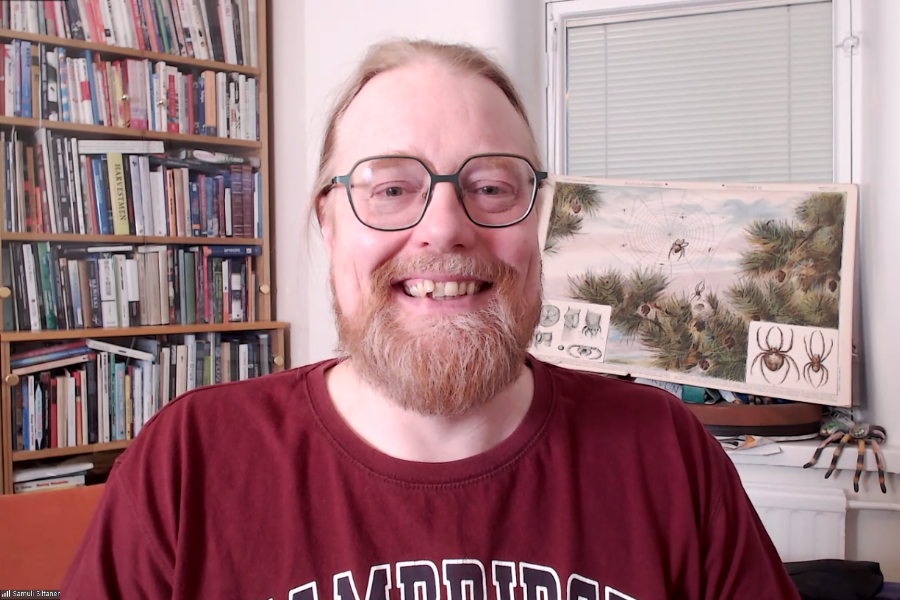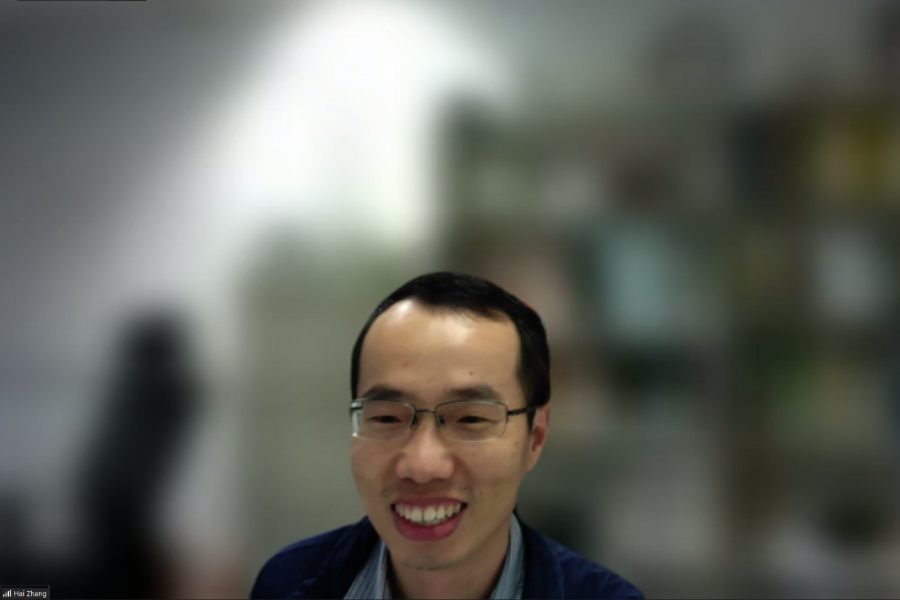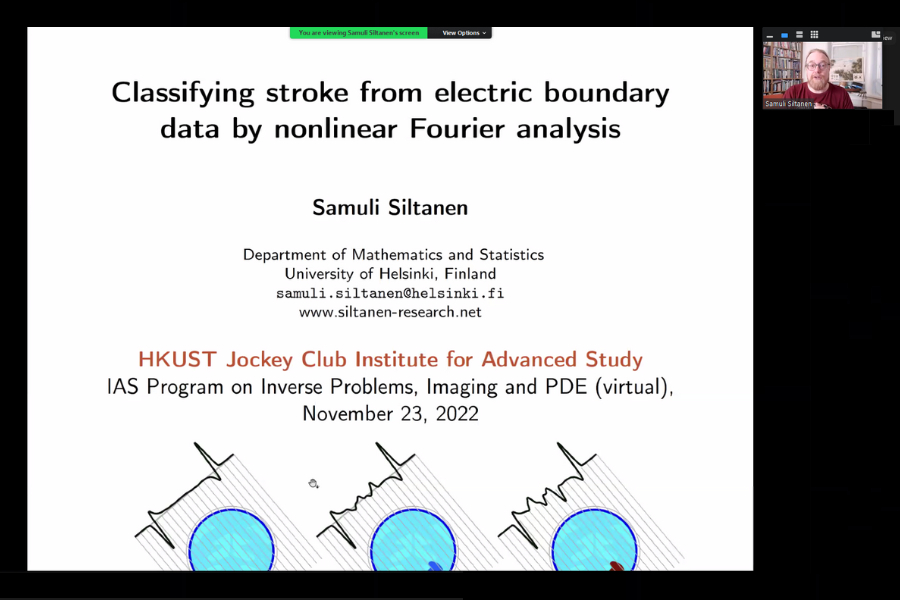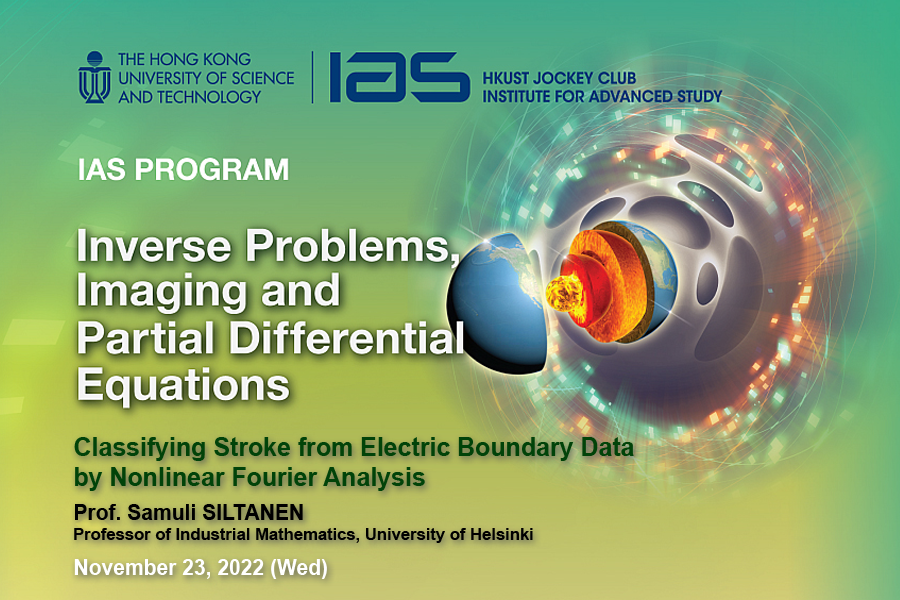Classifying Stroke from Electric Boundary Data by Nonlinear Fourier Analysis
Abstract
Stroke is a leading cause of death all around the world. There are two main types of stroke: ischemic (blood clot preventing blood flow to a part of the brain) and hemorrhagic (bleeding in the brain). The symptoms are the same, but very different on treatments. A portable “stroke classifier" would be a life-saving equipment to have in ambulances, but so far it does not exist. Electrical Impedance Tomography (EIT) is a promising and harmless imaging method for stroke classification. In EIT one attempts to recover the electric conductivity inside a domain from electric boundary measurements. This is a nonlinear and ill-posed inverse problem. The so-called Complex Geometric Optics (CGO) solutions have proven to be a useful computational tool for reconstruction tasks in EIT. A new property of CGO solutions is presented in this talk, showing that a one-dimensional Fourier transform in the spectral variable provides a connection to parallel-beam X-ray tomography of the conductivity. One of the consequences of this “nonlinear Fourier slice theorem” is a novel capability to recover inclusions within inclusions in EIT. In practical imaging, measurement noise causes strong blurring in the recovered profile functions. However, machine learning algorithms can be combined with the nonlinear PDE techniques in a fruitful way. As an example, simulated strokes are classified into hemorrhagic and ischemic using EIT measurements.
About the Speaker
Prof. Samuli SILTANEN obtained his MS, Licentiate and PhD, all in Applied Mathematics, from the Helsinki University of Technology in 1994, 1998 and 1999 respectively. He joined the Instrumentarium Corporation as a R&D Scientist in 1999-2002. He then moved to Gunma University in Japan under the Postdoctoral Fellowship Program of the Japan Society for the Promotion of Science. In 2004, he returned to Finland and worked at the GE Healthcare (Finland) as a R&D Scientist for a year. In 2006-2009, he was on the faculty at the Tampere University of Technology. He joined the University of Helsinki in 2009 and is currently a Professor of Industrial Mathematics in the Department of Mathematics and Statistics there.
Prof. Siltanen’s main research interest is in inverse problems of medical imaging. The goal of his scientific work is to design efficient numerical methods that have a sound mathematical basis and solve real-world problems. He has published research articles mostly about Electrical Impedance Tomography (EIT), low-dose three-dimensional X-ray imaging, dynamic X-ray tomography, discretization-invariant Bayesian inversion, and the Novikov-Veselov equation. He has authored two books on mathematical modelling and inverse problems. He also serves in the editorial board of Inverse Problems and Imaging.
Prof. Siltanen is the recipient of the 2021 Erkki Laurila Prize by the Finnish Nuclear Society and the 2020 Mathematics Prize by the Finnish Mathematical Society. In 2021, he was conferred the Knight, First Class, of the Order of the White Rose of Finland. He is a member of the Finnish Academy of Science and Letters, the Finnish Academy of Technical Sciences, the Society for Industrial and Applied Mathematics, the Finnish Mathematical Society, and the European Mathematical Society. He is also the President of the Finnish Inverse Problems Society and the Team Leader of the Finnish Centre of Excellence of Inverse Modelling and Imaging.
For Attendees' Attention
This talk will be held online via Zoom. To attend, please join the Zoom meeting at https://hkust.zoom.us/j/93417321216 (Meeting ID: 934 1732 1216 / Passcode: iasip2022).
About the Program
For more information, please refer to the program website at https://iasprogram.hkust.edu.hk/inverseproblems/.







